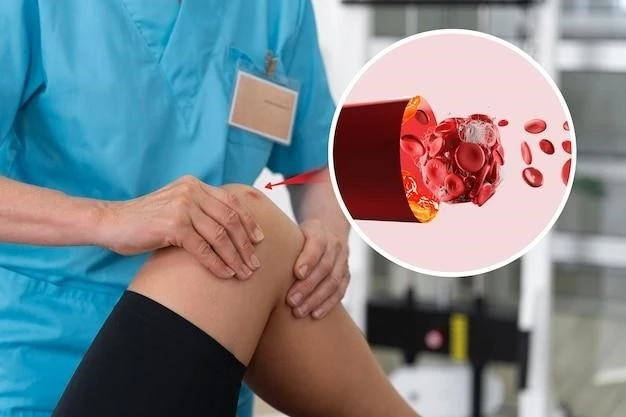Overview of Pseudoxanthoma Elasticum
Pseudoxanthoma elasticum (PXE) is a rare, inherited, multisystem disorder characterized by general fragmentation and progressive calcification of elastic tissue in the skin, blood vessels, and eyes. It is caused by a mutation in the ABCC6 gene and has various clinical presentations and patterns of inheritance.
Pseudoxanthoma elasticum (PXE) is a rare genetic disorder characterized by the accumulation of deposits of calcium and other minerals in elastic fibers, leading to skin abnormalities, eye issues, and cardiovascular problems. It is an inherited condition caused by mutations in the ABCC6 gene٫ affecting connective tissue in various parts of the body٫ resulting in a range of manifestations affecting the skin٫ eyes٫ and blood vessels.
Description and Characteristics
Pseudoxanthoma elasticum (PXE) is a rare genetic disorder characterized by the accumulation of deposits of calcium and other minerals in elastic fibers, leading to skin abnormalities, eye issues, and cardiovascular problems. It is an inherited condition caused by mutations in the ABCC6 gene, affecting connective tissue in various parts of the body, resulting in a range of manifestations affecting the skin, eyes, and blood vessels.
ABCC6 Gene Mutation
Pseudoxanthoma elasticum (PXE) is primarily caused by mutations in the ABCC6 gene, resulting in the abnormal accumulation of minerals in elastic fibers. This genetic mutation leads to the characteristic features of the disease, affecting multiple organs and systems in the body. Understanding the role of the ABCC6 gene helps in diagnosing and managing PXE, highlighting the importance of genetic testing in identifying individuals at risk for this rare disorder.
Clinical Manifestations
Pseudoxanthoma elasticum (PXE) presents with skin abnormalities, eye issues, and cardiovascular problems due to the accumulation of calcium and minerals in elastic tissues. Skin papules, angioid streaks in the eyes, and vascular complications are common manifestations.
Skin, Eye, and Vascular System Involvement
Pseudoxanthoma elasticum (PXE) affects various systems in the body, including the skin, eyes, and blood vessels. Clinical manifestations of PXE may present as skin lesions, ocular abnormalities such as angioid streaks, and cardiovascular complications due to the mineralization of elastic fibers in these tissues.
Diagnosis and Investigations
Accurate diagnosis of Pseudoxanthoma elasticum (PXE) involves a combination of genetic testing to identify mutations in the ABCC6 gene and histopathological examination of affected tissues, particularly the skin and eyes. These investigations are crucial for confirming the presence and extent of elastic tissue mineralization, aiding in the management and prognosis of the condition.
Genetic Testing and Histopathology
In diagnosing Pseudoxanthoma elasticum (PXE), genetic testing to identify mutations in the ABCC6 gene is essential. Additionally, histopathological examination of affected tissues, such as the skin and eyes, confirms the presence of elastic fiber calcification. These investigations play a critical role in the accurate diagnosis and management of PXE, providing insight into the pathophysiology of the disease and guiding treatment strategies.

Management Approaches
Effective management of Pseudoxanthoma elasticum (PXE) involves a combination of treatment modalities aimed at addressing the specific manifestations in the skin, eyes, and blood vessels. Strategies include preventive measures, symptom management, and regular monitoring to prevent complications and optimize the quality of life for individuals with PXE.
Treatment and Preventive Strategies
Management of Pseudoxanthoma elasticum (PXE) focuses on addressing specific symptoms affecting the skin, eyes, and blood vessels. Treatments aim to alleviate discomfort, prevent complications, and improve quality of life. Additionally, preventive strategies such as regular monitoring and lifestyle modifications may help manage PXE effectively.
Epidemiology and Prevalence
Pseudoxanthoma elasticum (PXE) is a rare genetic disorder with an estimated prevalence ranging from 1 in 25,000 to 1 in 100,000 individuals. The condition is caused by mutations in the ABCC6 gene and primarily affects the skin, eyes, and cardiovascular system. PXE is characterized by abnormal mineralization of elastic tissues, leading to various clinical manifestations.
Incidence and Frequency
Pseudoxanthoma elasticum (PXE) is a rare genetic disorder with an estimated prevalence between 1 in 25,000 and 1 in 100,000 individuals. The condition is caused by mutations in the ABCC6 gene and primarily affects the skin, eyes, and cardiovascular system. PXE is characterized by abnormal mineralization of elastic tissues, leading to various clinical manifestations.
Complications and Prognosis
Pseudoxanthoma elasticum (PXE) can lead to complications in various organs, impacting the overall prognosis of individuals affected by this rare disorder. Understanding the potential complications and the long-term prognosis is crucial for managing the condition effectively and enhancing the quality of life for patients with PXE.
Impact on Quality of Life
Pseudoxanthoma elasticum (PXE) can have a significant impact on the quality of life of affected individuals due to the visible skin lesions, potential eye complications affecting vision, and cardiovascular issues associated with the condition. Managing the physical manifestations of PXE and addressing its long-term implications are essential in improving the well-being and quality of life for patients with this rare genetic disorder.

Research and Advancements
Recent studies and advancements in the understanding of Pseudoxanthoma elasticum (PXE) have shed light on the genetic basis, pathophysiology, and potential treatment strategies for this rare disorder. Ongoing research aims to further elucidate the disease mechanisms, identify novel therapeutic approaches, and improve outcomes for individuals affected by PXE.
Current Studies and Future Directions
Ongoing research on Pseudoxanthoma elasticum (PXE) focuses on understanding the genetic mutations driving the condition, exploring novel treatment modalities, and improving diagnostic approaches. Future directions aim to enhance clinical management, develop targeted therapies addressing elastic tissue calcification, and ultimately improve outcomes for individuals with PXE.
Support Resources and Organizations
For individuals affected by Pseudoxanthoma elasticum (PXE), various support resources and organizations offer assistance to patients and their families, providing information, guidance, and emotional support. These resources help individuals navigate the challenges associated with PXE and connect them to communities that understand their unique needs.
Assistance for Patients and Families
Individuals affected by Pseudoxanthoma elasticum (PXE) and their families can benefit from various support resources and organizations that provide information, emotional support, and guidance. These resources aim to help patients navigate the challenges associated with PXE, understand the condition better, and connect with others facing similar experiences, ultimately improving the overall well-being and quality of life of individuals and families affected by this rare genetic disorder.
